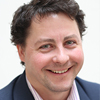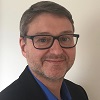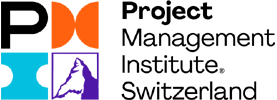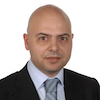Author: Carlos Martinez, PMP

On the 1st of December, Mr.Jürgen Ekert presented at the Hotel Victoria (Basel) the event "Learn from the best, the way to Project Excellence."
The room was full for the event, and few of the attendants knew that it was going to be a very interactive presentation.
Initially the attendants were asked to "Break the Ice" by meeting with another and sharing with them an experience they considered as a good achievement. This direct communication aims at bringing people together, to loosen up the atmosphere.

This can also be blended with a session of Lessons Learned fom previous projects, which will help the project with the learnings captured in other projects by different teams.
Continuing, Mr. Ekert explained how generations differ in the learning process, which is important as training has to be adapted to the different processes, and for this, the department he manages, Project Office, has created several training processes.

As a recommended practice, trainings should not be series of PowerPoint slides, but rather as interactive as possible, for this flipcharts are ideal, together with forming working groups so that they can apply the training with their day to day. The flipcharts can be prepared upfront with prints that can help the development of the workshops.
When starting the training workshop it is necessary that the goals are laid out, for this all trainess should indicate what do they want to do different? The so called"Future Perfect".
One interesting learning from Mr. Ekert's trainings is that he has realised that in most cases teams actually know how to solve a problem issue, but they still need someone from outside to guide them, someone who is neutral and can challenge the team, someone who knows how and when to ask the right questions and that at the same time facilitates the workshop.People need time for reflection which will even be deeper if different questions are asked. With this the participants find much better Solutions.
When asking questions, the facilitator has to make team face the hot topics, also recall the achievements done by the team.

After that the targets for improvement have to be identified, for this the project team vote the points they think would improve most the results.
Now that the team has a clearer understanding on how to achieve the "Future Perfect", it is recommended to re-visit how they foresee this and give a clear definition to what this would look like and the requirements for such. First steps / action items need to be defined.
Finally, the training workshop does not end here, but should be reassesed at some point in the near future, indicating what will be the team's next steps, who will take care of what and when in time will the team reasses how far have they progressed towards the "Future Perfect".

To ensure that each team member "takes something home", there are 2 questions that will help them to understand better how they have progressed during the workshop. "What will be different after the workshop?" and "What else?" with this second quesiton, the team is challenged further, helping them to deeper understand their progress and how to achieve it. The second question can be repeated multiple times.
Another question that helps people is "How would they recognize that a problem has been solved?" and "How would a colleague recognize this?"
My personal big thank you to Mr. Jürgen Ekert for sharing his experience both professional and personnal and for organizing it. Looking forward to participating at the next PMI event, I wish all the readers a happy and successful 2017.
Kind regards,
Carlos

















